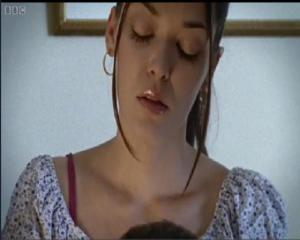
Black and white effect creates tense atmosphere, film noir
European, subtitled and cultural differences in film
Sounds are heavily emphasised, there is little dialogue so footsteps, bike bells etc. are given increased volume.
Smoke more visible in the black and white
Blurred focus at times leaves viewer disoriented.
Evocative music - reinforces enigma, off beat.
Meaningless, awkward conversation as the meaning is in the visual, in this case a slow start
Panning shot of loading guns and spinning cylinders
Series of close-ups - showing nervous men, 360 degree pan showing men with guns
Uses lightbulb as a reference to build tension (when it goes out they shoot) - shots between men and lightbulb increasingly shorter.
Ignores conventions of time - even though all shoot at the same time it shows reaction one after the other.
Close ups of eyes to show intensity and fear
Contrast between men gambling - professional, rich in suits and pawns putting lives on the line.
Tension builds as fewer people remain in competition, feature we will us in poker film. As competition goes on rivalries build and so does intensity builds. Stakes raise and chance of success raises.
In poker stakes will raise and chance of main characters success will be made to look unlikely but will prevail in the end.
Harsh, brash and impatient organisers shout - reinforces illegality.
Main characters left in are often recognisable - 13 has an obese character thus making the audience able to follow it more easily.
Duel like the last leg of poker - shows two shot initially then - other the shoulder shot of both - moves in closer with OTS - pans audience reaction. (Close up/extreme close up could be used to show intensity.
Second duel, mid shot of each then into close ups.
Attention paid to eyes and reaction - like our poker idea, main character in 13 is novice. Scared, shivering compared to the composed experienced gambler (shooter) yet he still wins., despite disliking activity.
When packing money the character feels guilt but the packer is clinical, little emotion.
Sweat is a clear signal of nerves and fear, accompanied by a slouched walk, fixed eye and facial expression


